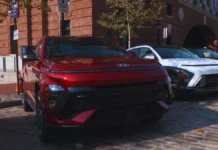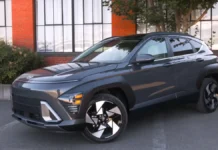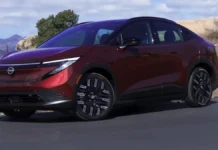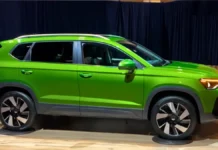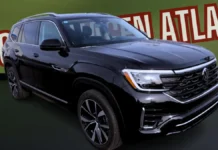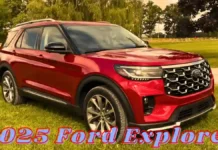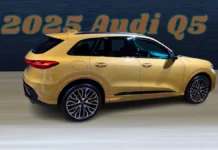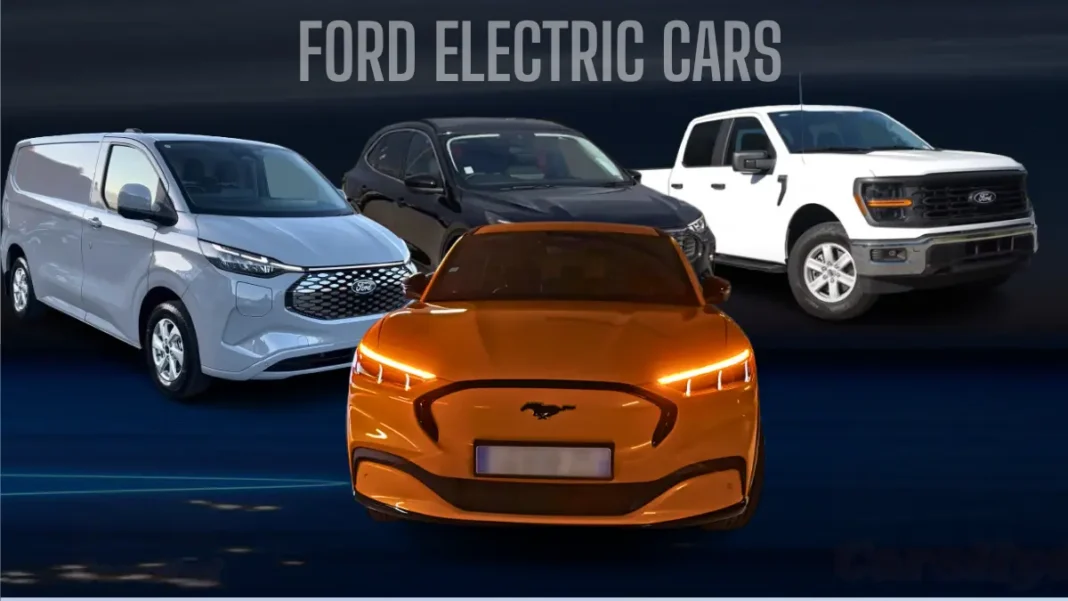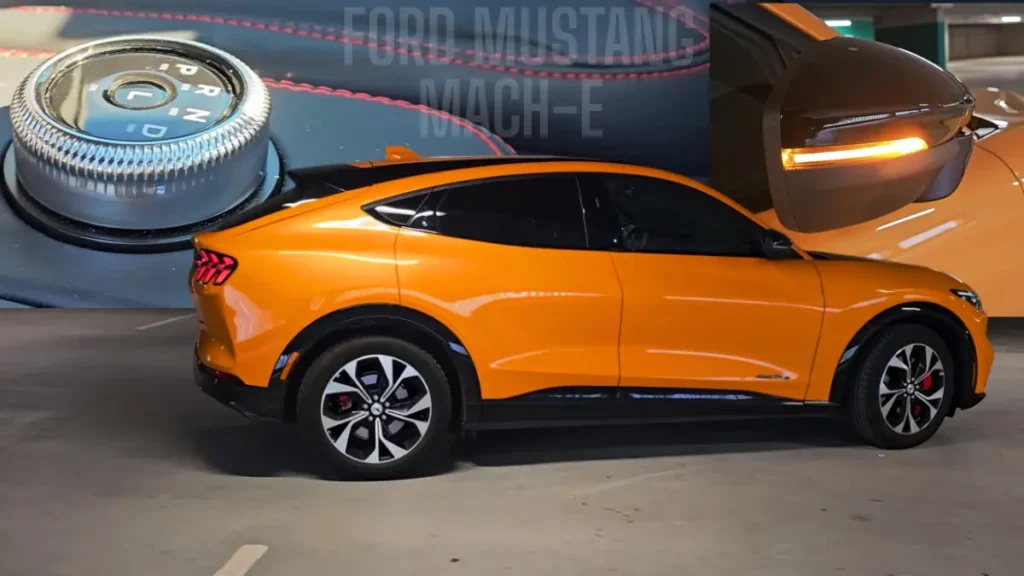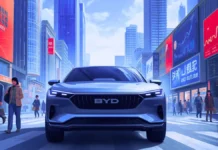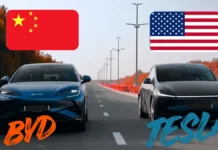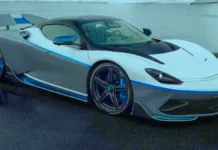The rumble of the internal combustion engine is steadily giving way to the quiet hum of electric motors, and Ford Motor Company isn’t just along for the ride – it’s steering decisively into the future. Once synonymous with V8s and rugged trucks, Ford has rapidly transformed itself into a formidable player in the electric vehicle (EV) arena. In 2025, Ford electric cars lineup is no longer a tentative experiment; it’s a diverse, compelling portfolio designed to meet the needs of performance enthusiasts. This surge isn’t just about keeping up; it’s about leading the charge towards sustainable transportation without sacrificing the capability, performance, and iconic American spirit Ford is known for. This comprehensive guide dives deep into Ford’s 2025 electric offerings, exploring every model’s capabilities, real-world range expectations, the rapidly evolving charging ecosystem (including the groundbreaking Tesla integration), ownership benefits, cutting-edge tech, and Ford’s commitment to a greener planet.
Table of contents
- Overview of Ford Electric cars Lineup
- Driving Range and Performance
- Charging Infrastructure and Solutions: Powering Up Made Easier
- Federal Tax Incentives and Ownership Benefits: Making EVs Affordable
- Technological Innovations: Where Ford EVs Shine
- Environmental Impact and Sustainability: Driving Green
- Ford Electric cars Future is Now
- Ford electric cars FAQs
Overview of Ford Electric cars Lineup
Ford’s 2025 EV strategy brilliantly targets distinct segments, proving that electrification doesn’t mean compromise.
Mustang Mach-E: Electrifying an Icon
- The Pitch: Ford took a bold leap by electrifying its legendary pony car nameplate, and the gamble paid off. The Mustang Mach-E is a sleek, performance-oriented electric SUV that marries head-turning style with exhilarating acceleration and surprisingly practical packaging.
- The Details: Available in multiple trims (Select, Premium, California Route 1) culminating in the ferocious GT and GT Performance Edition. Expect cutting-edge technology, a driver-centric cockpit, and a spacious, tech-forward interior.
- The Range (EPA Estimated): Ranges from a solid 230 miles for base RWD models to an impressive 320 miles for the extended-range RWD California Route 1. The GT sacrifices some range (around 280 miles) for its blistering performance.
F-150 Lightning: Powering Work and Play, Electrically
- The Pitch: America’s best-selling truck for decades goes electric, retaining every ounce of the F-150’s legendary capability while adding mind-blowing electric torque, innovative features, and zero tailpipe emissions. It’s a game-changer for both job sites and family adventures.
- The Details: Offers multiple cab/bed configurations and trims (Pro for fleets, XLT, Lariat, Platinum). Key innovations include the massive front trunk (“frunk”), Pro Power Onboard (exporting power to tools or your home), and towing/hauling prowess rivaling its gas siblings.
- The Range (EPA Estimated): Starts at a practical 240 miles (Standard Range Battery). Opt for the Extended Range battery, and you’ll achieve up to 320 miles of range, crucial for towing or long hauls.
E-Transit: Electrifying the Business World
- The Pitch: Built for businesses seeking cleaner, quieter, and lower-cost operation, the E-Transit is Ford’s fully electric cargo van. It tackles urban deliveries, service calls, and shuttle duties with zero emissions and reduced operating expenses.
- The Details: Highly configurable with various roof heights, body lengths, and GVWR options to suit diverse commercial needs. Focuses on durability, cargo capacity, and seamless integration into fleet operations.
- The Range (EPA Estimated): Designed primarily for predictable daily routes, its range is optimized for urban/suburban use (typically around 126 miles for the low-roof variant, varying by configuration). This proves ample for most last-mile delivery and service scenarios.
Escape Plug-In Hybrid (PHEV): The Bridge to Full EV
- The Pitch: For drivers not quite ready to leap fully electric but wanting significant electric-only driving for daily commutes, the Escape PHEV offers the perfect compromise. It combines a gasoline engine with a plug-in electric motor for impressive overall efficiency and reduced fuel costs.
- The Details: A versatile and popular compact SUV that retains all its practicality. The PHEV system allows for emission-free driving on shorter trips while eliminating range anxiety for longer journeys.
- The Electric Range (EPA Estimated): Offers an electric-only range typically around 37 miles – sufficient to cover many daily commutes entirely on electricity before the gasoline engine seamlessly engages.
Driving Range and Performance
Understanding real-world expectations is key when evaluating EVs.
Mustang Mach-E: Thrills and Practicality
- Range Realities: While EPA estimates are a benchmark, actual range varies. Aggressive driving (especially in the thrilling GT), cold weather, high speeds, and using climate control can reduce range. Conversely, gentle driving in mild weather can sometimes exceed estimates. The Mach-E’s Intelligent Range system factors in driving habits and conditions for more accurate predictions.
- Performance Punch: The Mach-E delivers instant torque for quick acceleration across the board. The GT variant is the star, producing up to 480 horsepower and achieving 0-60 mph in the mid-3-second range – supercar territory from a family SUV.
F-150 Lightning: Capability Uncompromised
- Range Under Load: Towing or hauling near maximum capacity significantly impacts the Lightning’s range – potentially cutting it by 50% or more. Careful trip planning using the built-in EV trip planner (considering charging stops) is essential for heavy-duty work. The Extended Range battery is highly recommended for frequent towers.
- Powerhouse Performance: Don’t mistake “electric” for “weak.” The Lightning delivers immense, instantaneous torque (up to 775 lb-ft!) for effortless acceleration, confident merging, and impressive towing capability rivaling gas-powered heavy-duty trucks in many scenarios. Its low center of gravity also enhances handling stability.
E-Transit: Built for the Daily Grind
- Optimized for Purpose: Its range is perfectly suited for its core mission: predictable daily routes within cities and suburbs. Fleet managers appreciate the lower “fuel” costs and reduced maintenance compared to diesel vans. Real-world range depends heavily on cargo load, stop-and-go frequency, and accessory use (like refrigeration units).
- Efficient Power: Delivers smooth, quiet power ideal for urban environments. The instant torque aids in pulling away from stops, even when loaded.
Escape PHEV: Efficiency Master
- Maximizing Electric Miles: The key to unlocking savings is maximizing the electric-only range. Regular charging (even just Level 1 overnight) ensures you start each day with a full “tank” of electrons for your commute. Once the battery depletes, it operates like a standard hybrid for excellent overall fuel economy.
- Seamless Transition: The shift between electric and hybrid power is impressively smooth. The combined system provides ample power for daily driving needs.
Charging Infrastructure and Solutions: Powering Up Made Easier
Ford has made significant strides in simplifying the charging experience, significantly reducing range anxiety.
Home Charging: Your Personal Refueling Station
- Ford Mobile Power Cord: Included with purchase, this plugs into a standard 120V household outlet. It’s slow (adding ~2-3 miles of range per hour), best for overnight top-ups or PHEVs like the Escape.
- Ford Connected Charge Station: The recommended solution for most owners. This Level 2 charger (240V) can be installed in your garage or driveway. Charging speeds vary by vehicle and home electrical capacity, but typically add 20-30+ miles per hour, easily replenishing a daily commute overnight. Smart features allow scheduling for off-peak rates.
- Ford Charge Station Pro (For F-150 Lightning Extended Range): This powerhouse 80-amp Level 2 charger enables the fastest possible home charging for the Lightning (up to 30 miles of range per hour). Crucially, it also enables the F-150 Lightning’s unique vehicle-to-home (V2H) backup power capability when paired with the Home Integration System.
BlueOval™ Charge Network: Your Nationwide Lifeline
- Massive Reach: This is Ford’s curated public charging network, providing access to a staggering number of chargers across North America. The headline? Access to over 15,000 Tesla Superchargers starting in Spring 2024 and fully integrated by 2025. Plus, seamless access to over 10,000 DC fast chargers from other major providers (like Electrify America, EVgo, ChargePoint).
- Seamless Experience: Use the FordPass app or your vehicle’s touchscreen to find chargers, check availability, initiate charging (often with Plug & Charge for automatic billing), and monitor your session. Payment is consolidated through Ford.
Tesla Supercharger Integration: A Game-Changing Move
- How it Works: Ford EV owners (Mach-E, F-150 Lightning) simply use an adapter (provided by Ford) to connect to Tesla’s ubiquitous and reliable V3 Superchargers. This integration dramatically expands the number of available ultra-fast charging locations, especially along major highways.
- Benefits: Reduced range anxiety for road trips, faster charging times due to Tesla’s high reliability and power output, and a vastly improved long-distance travel experience. This is arguably Ford’s single biggest advantage in charging infrastructure for 2025.
Public Charging Accessibility: Convenience is Key
- Beyond BlueOval: Ford EVs can also utilize non-network public chargers using the FordPass app or a credit card/RFID card from the respective provider.
- Plug & Charge: On supported networks within the BlueOval network, simply plugging in initiates charging and billing automatically to your linked Ford account – no app or card swipe needed. It’s as easy as fueling a gas car.
- Trip Planning: Ford’s in-vehicle navigation integrates with the charging network, planning optimal routes with charging stops based on your vehicle’s current range and state of charge.
Federal Tax Incentives and Ownership Benefits: Making EVs Affordable
Financial incentives significantly lower the entry barrier.
Eligibility for Federal Tax Credits:
- The Big One: Qualifying new Ford EVs (Mach-E, F-150 Lightning, E-Transit) are potentially eligible for the federal Clean Vehicle Tax Credit of up to $7,500. This is a credit applied against your federal income tax liability the year you purchase the vehicle.
- Key Conditions: Eligibility depends on several factors:
- Final Assembly: The vehicle must undergo final assembly in North America (all Ford EVs currently do).
- Battery Component & Critical Minerals: Stricter sourcing requirements for battery components and critical minerals phased in. Ford works diligently to meet these, but eligibility for the full $7,500 for specific trims/configurations should be confirmed at the time of purchase via the official IRS website or your dealer. Some vehicles might qualify for a partial credit ($3,750).
- MSRP Caps: Vans, SUVs, and trucks must have an MSRP below $80,000; sedans below $55,000. Most Mach-E and Lightning trims fall under these caps, but check specific configurations (e.g., Platinum trim might push limits).
- Income Limits: There are modified adjusted gross income (MAGI) caps for buyers ($300k married filing jointly, $225k head of household, $150k single).
- Point-of-Sale Rebate (Coming Soon): Starting January 1, 2024, buyers can often choose to transfer this credit to the dealer at the point of sale, effectively reducing the purchase price immediately.
Navigating Changing Policies:
- Stay Informed: EV tax credit rules have evolved significantly. While the current structure is expected to hold through 2025, future legislative changes are always possible. Consult the IRS website (IRS.gov/cleanvehicles) or a tax advisor for the absolute latest details before purchasing.
Ford Ownership Perks:
- Ford Power Promise: This program often bundles valuable benefits like complimentary home charger installation credits (with charger purchase) or discounted charging hardware, enhancing the ownership experience.
- BlueOval™ Charge Network Discounts: Ford frequently offers reduced charging rates on its network, especially for DC fast charging, lowering operating costs.
- Support & Warranty: Access to Ford’s 24/7 customer support and roadside assistance. Ford EVs come with an 8-year/100,000-mile warranty on the high-voltage battery, providing significant peace of mind.
Technological Innovations: Where Ford EVs Shine
Ford leverages technology to enhance safety, convenience, and the driving experience.
Advanced Driver-Assistance Systems (ADAS):
BlueCruise: Ford’s flagship hands-free highway driving system. On pre-mapped, divided highways (termed “Blue Zones”), BlueCruise allows drivers to take their hands off the steering wheel while the system manages steering, acceleration, and braking. An infrared camera monitors driver attentiveness. Coverage is extensive and growing via over-the-air updates.
Infotainment and Connectivity:
Over-the-Air (OTA) Updates: Ford continuously improves its vehicles after purchase. OTA updates can add new features, enhance performance, improve existing systems (like BlueCruise mapping), and fix bugs without a dealership visit. This ensures your Ford EV gets better over time.
Intelligent Range and EV Routing:
Proactive Trip Planning: Enter a destination into the navigation, and the system will automatically calculate if charging is needed. It then plots the optimal route, including recommended charging stops at BlueOval Network stations, estimating charging time required to reach your destination comfortably. This eliminates guesswork for long journeys.
Post You May Find Useful:
Environmental Impact and Sustainability: Driving Green
Ford’s EV push is fundamentally tied to a broader sustainability mission.
Reduced Emissions:
- Zero Tailpipe: The most direct benefit. Ford EVs produce zero tailpipe emissions, significantly improving local air quality, especially in urban areas.
- Lifecycle Impact: While manufacturing EVs (particularly batteries) has an environmental footprint, numerous studies confirm that over their lifetime (including electricity generation), EVs produce significantly lower total greenhouse gas emissions than comparable gasoline vehicles. As the electrical grid becomes cleaner, this advantage grows.
Sustainable Manufacturing:
- Carbon Neutrality Goal: Ford has committed to achieving carbon neutrality globally by 2050, with interim targets for 2035.
- Eco-Friendly Practices: This includes investing in renewable energy for manufacturing plants (like using solar power), reducing water usage, minimizing waste (aiming for zero waste to landfill), and sourcing more sustainable materials (recycled fabrics, soy-based foams, recycled plastics).
Battery Recycling and Second Life:
- Closing the Loop: Ford recognizes the importance of responsible battery end-of-life management. They have established partnerships (like with Redwood Materials) to create closed-loop recycling processes.
- The Process: Recycling recovers valuable materials like lithium, cobalt, and nickel, reducing the need for new mining and minimizing environmental impact. These materials can then be used in new Ford EV batteries.
- Second-Life Applications: Before recycling, batteries that no longer meet the rigorous demands for vehicle propulsion may find a “second life” in less demanding stationary energy storage applications, further extending their usefulness.
Ford Electric cars Future is Now
Ford’s 2025 electric cars lineup marks a pivotal moment, not just for the company, but for the entire automotive landscape. The days of EVs being niche or compromised are over. With the thrilling Mustang Mach-E, the revolutionary F-150 Lightning proving electric trucks are not just viable but superior in many ways, the practical and efficient E-Transit electrifying commerce, and the sensible Escape PHEV offering a gateway, Ford has compelling electric options across crucial segments.
Crucially, Ford has tackled the biggest hurdles head-on. Impressive and increasingly accurate driving ranges, combined with the revolutionary integration of Tesla’s vast Supercharger network and the expansive BlueOval Charge Network, have shattered the practical limitations of EV ownership. Charging at home is simpler and faster than ever, while road trips are now genuinely feasible and convenient.
Beyond the hardware, Ford is enhancing ownership through significant financial incentives like the federal tax credit, supportive programs like Power Promise, and the peace of mind of robust warranties. Cutting-edge technology, from the serenity of hands-free BlueCruise highway driving to the constantly improving SYNC 4A infotainment and intelligent range systems, makes these vehicles not just sustainable choices but genuinely desirable and advanced machines.
Finally, Ford’s commitment extends beyond the showroom. The push towards carbon neutrality, sustainable manufacturing practices, and comprehensive battery recycling initiatives demonstrate a holistic approach to environmental responsibility. Choosing a Ford EV in 2025 isn’t just about choosing a capable and exciting vehicle; it’s about participating in a fundamental shift towards cleaner transportation and a more sustainable future.
Ford electric cars FAQs
- What Ford electric cars are available in 2025?
Ford’s 2025 EV lineup includes the Mustang Mach-E, F-150 Lightning, E-Transit van, and the Escape Plug-In Hybrid. - How far can Ford electric cars drive on a single charge?
Depending on the model and battery, Ford EVs offer ranges from 37 miles (Escape PHEV) to 320 miles (Mach-E and Lightning). - Can Ford EVs use Tesla Superchargers in 2025?
Yes, Ford EVs are compatible with Tesla Superchargers starting in 2025 using a provided adapter, improving charging access nationwide. - Is there a tax credit for Ford electric cars?
Many 2025 Ford EVs may qualify for up to a $7,500 federal tax credit, depending on trim, battery sourcing, and buyer income. - How do I charge my Ford EV at home?
You can use the included mobile charger or install a Ford Connected Charge Station for faster Level 2 home charging. - What are the benefits of owning a Ford electric cars?
Ford EVs offer zero emissions, reduced running costs, smart tech, BlueCruise hands-free driving, and strong warranty coverage.


